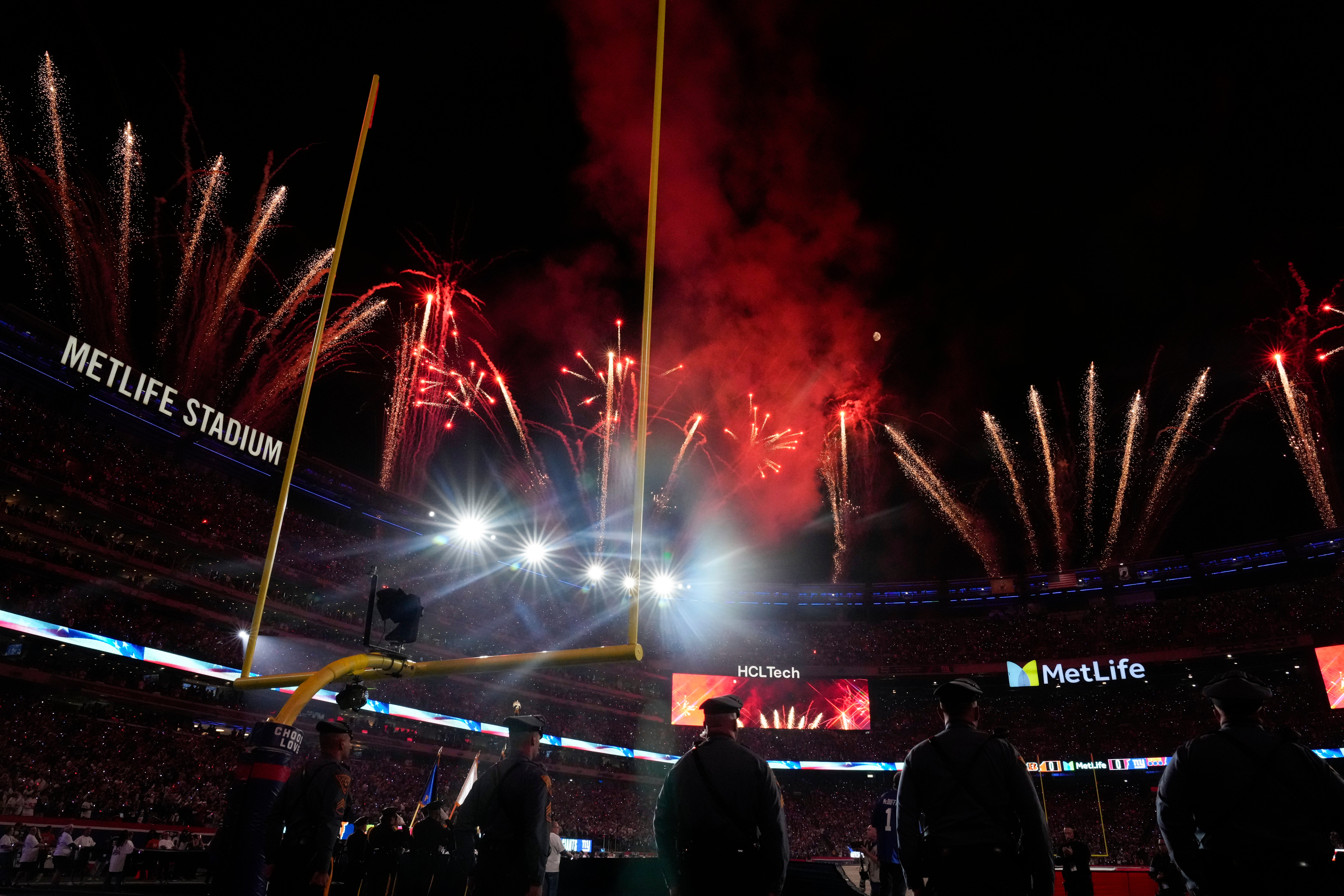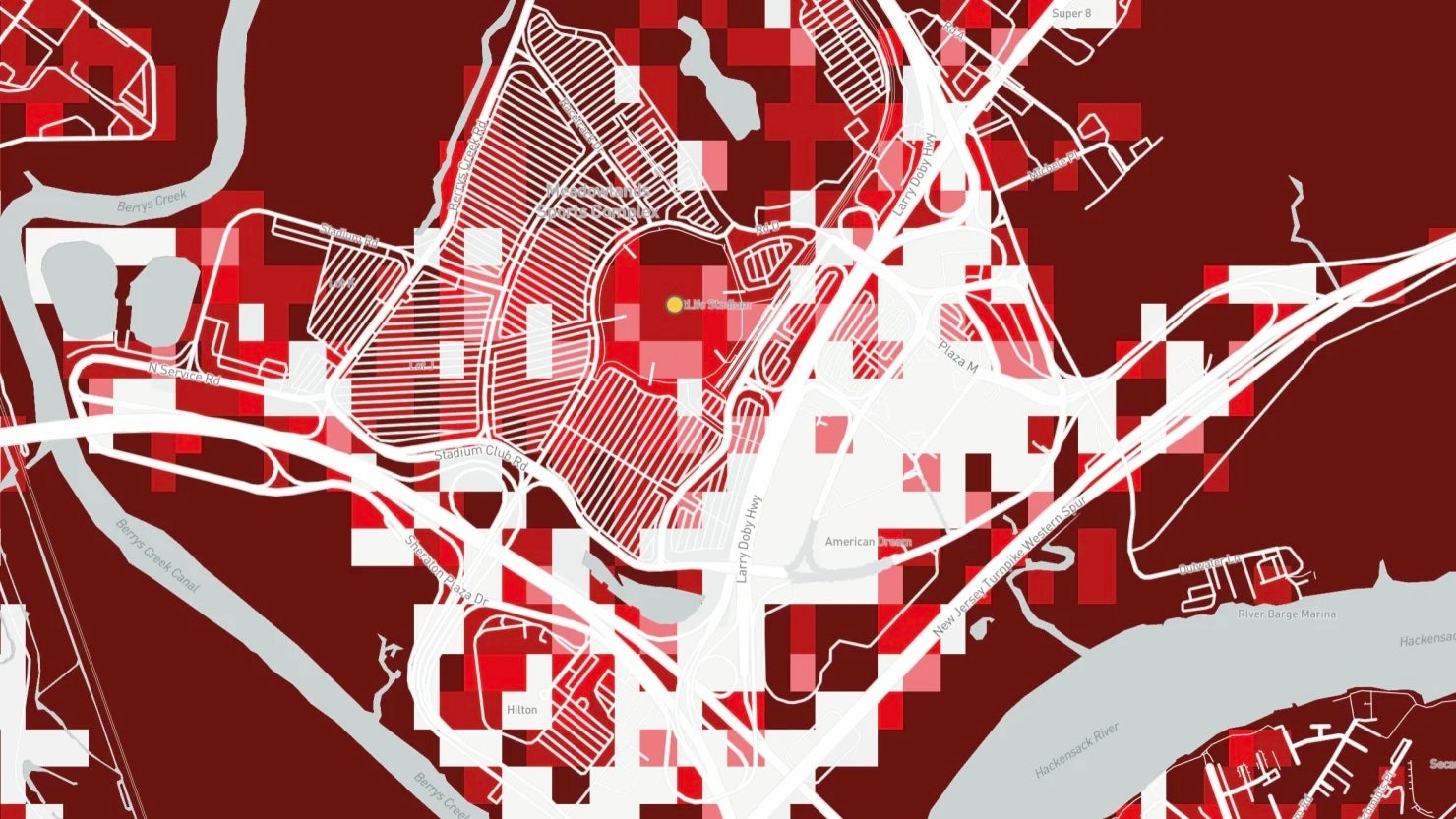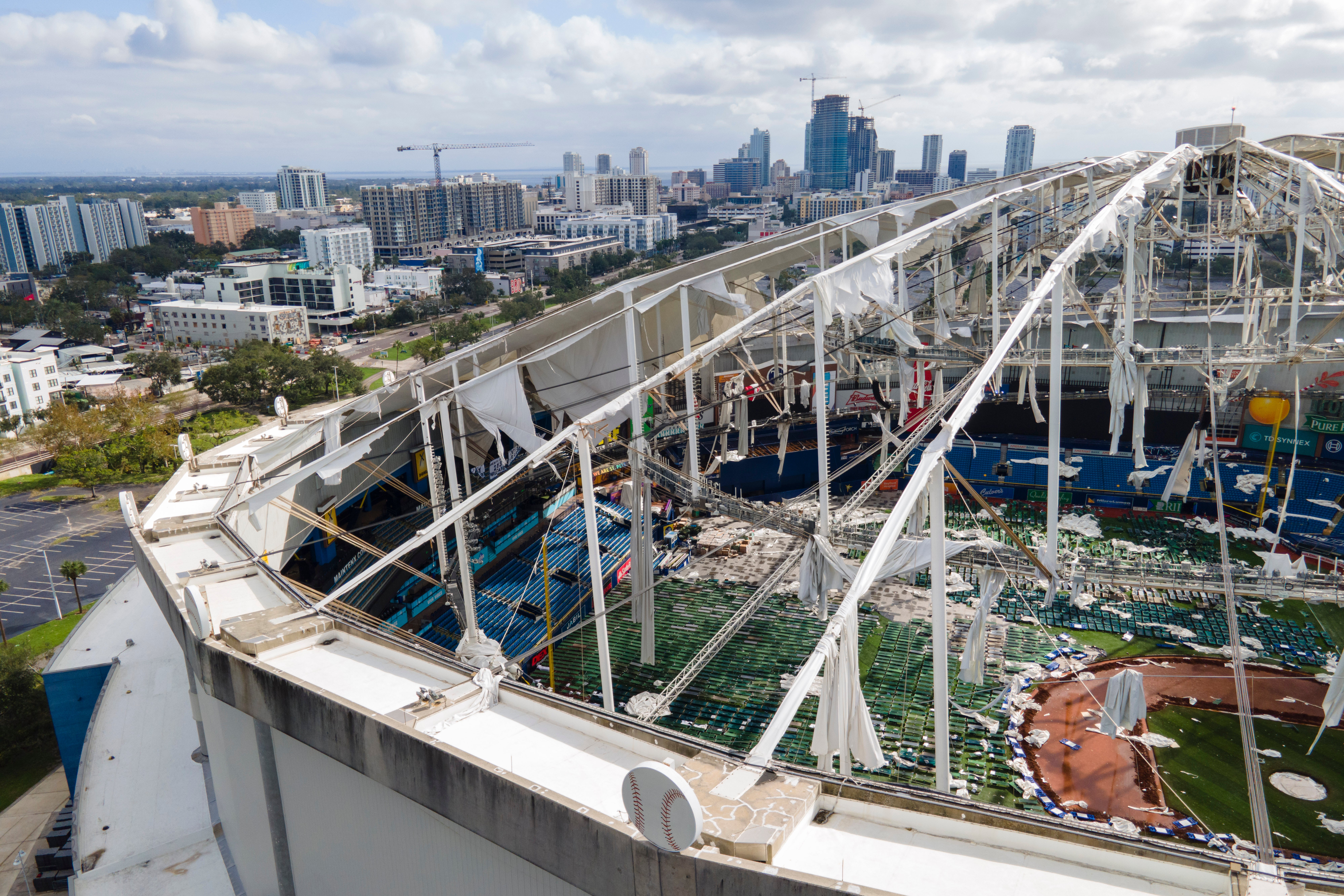NFL stadiums across the country could take a major financial blow due to climate change.
A new report from Climate X, a climate risk analytics company, estimates that NFL stadiums could experience up to $11 billion in cumulative climate-related losses by the year 2050. This could mean higher insurance and repair costs, impacts to local economies, and disruptions in the league.
Among the 30 stadiums that were evaluated, some were identified as more vulnerable to 11 natural hazards like flooding, wildfires, extreme heat, and storm surge.
New Jersey’s MetLife Stadium is the most vulnerable, and is projected to incur a total loss of $5.64 billion. This is largely due to its exposure to storm surge and surface flooding. The loss the stadium could sustain is also greater than its estimated replacement cost.
“MetLife Stadium in New Jersey is one venue, in particular, that we’ve projected could sustain pretty severe losses in the future. And the hazards that we identified as large instigators of that damage are surface flooding and storm surge,” Austin Clack, a solution engineer, at Climate X, told The Independent on Friday. “And so, with that knowledge, you can then move on to choosing certain adaptation measures that might reduce that risk.”
Adaptation measures like setting up better drainage and floodwalls can have a substantial impacts on the losses a venue could sustain.

In California, the Los Angeles Rams’ SoFi Stadium – the most expensive NFL stadium ever constructed – could suffer losses of $4.38 billion primarily due to surface flooding risks.
The Arizona Cardinals’ State Farm Stadium, which is based in Phoenix, could see $965 million in cumulative damages that were also tied to flooding.
These three venues make up nearly 30 percent of the total potential 2050 losses.
The stadiums of the Green Bay Packers and Seattle Seahawks are expected to have much lower relative loss rates. The Wisconsin Lambeau Field is landlocked and the Washington Lumen Field benefits from the city’s temperate climate.
To determine these estimates, Climate X utilizes a platform called Spectra: technology that allows them to use authoritative climate models as a way to develop hazard models. They create a digital representation of the natural and built environment and put their hazard models on top to understand the effects of these events in different locations.

There were some limitations to their findings, including that they could be overestimating loss, that adaptation measures between now and then may be unknown, and that the future is far more uncertain in 2050 than it is right now.
But, based on that representation, Clack and his colleagues could see that surface flooding was the hazard that affected the widest range of assets. There is increased exposure in urban, coastal, and more low-lying areas.
“A big driver of surge flooding is whether the actual landscape can absorb water. So, in these larger environments where we see lots of concrete, the water’s just not being absorbed,” he explained.
Subsidence, or the sinking of land because of underground material movement, was also an important factor at State Farm Stadium in Arizona.
“So, we’re seeing the grounds shift anew which can have pretty significant impacts to your infrastructure in terms of creating fissures in your actual building structure itself,” said Clack.

With continual rapid shifts in the Earth’s climate, the need for continued modeling only increases. The climate crisis is very much here; earlier this month Hurricane Milton – one of a number of storms thought to have been strengthened by the effects of climate change – ripped off the roof of the Tampa Bay Rays’s Tropicana Field in Florida, while stoms have brought major flooding this week to Italy, France, Spain, and Mexico. Modeling can help to capture patterns and provide officials with data to understand necessary adaptation and mitigation strategies.
“We’re talking about physical risk here but reducing CO2 emissions is, at the end of the day, what’s really going to cut back in terms of the actual severity of climate-related weather events,” Clack said.
He said that he believes the capacity for climate change to have significant impacts on the NFL is “vast.”
The NFL is the highest-grossing sports league in the world, with its 32 teams generating billions in annual revenue. And taxpayers are paying billions for the renovations and construction of their stadiums, according to CNBC.
Better understanding and interpreting climate science and making it actionable could protect taxpayers’ investments, which often serve as community hubs and economic boons.
“That first step is just understanding how climate change can impact you. And I think, by doing so, you’re already moving forward in terms of building your resiliency,” Clack said.
The next step is putting a plan into action.









![Best Weight Loss Supplements [2022-23] New Reports!](https://technologytangle.com/wp-content/uploads/2022/12/p1-1170962-1670840878.png)




